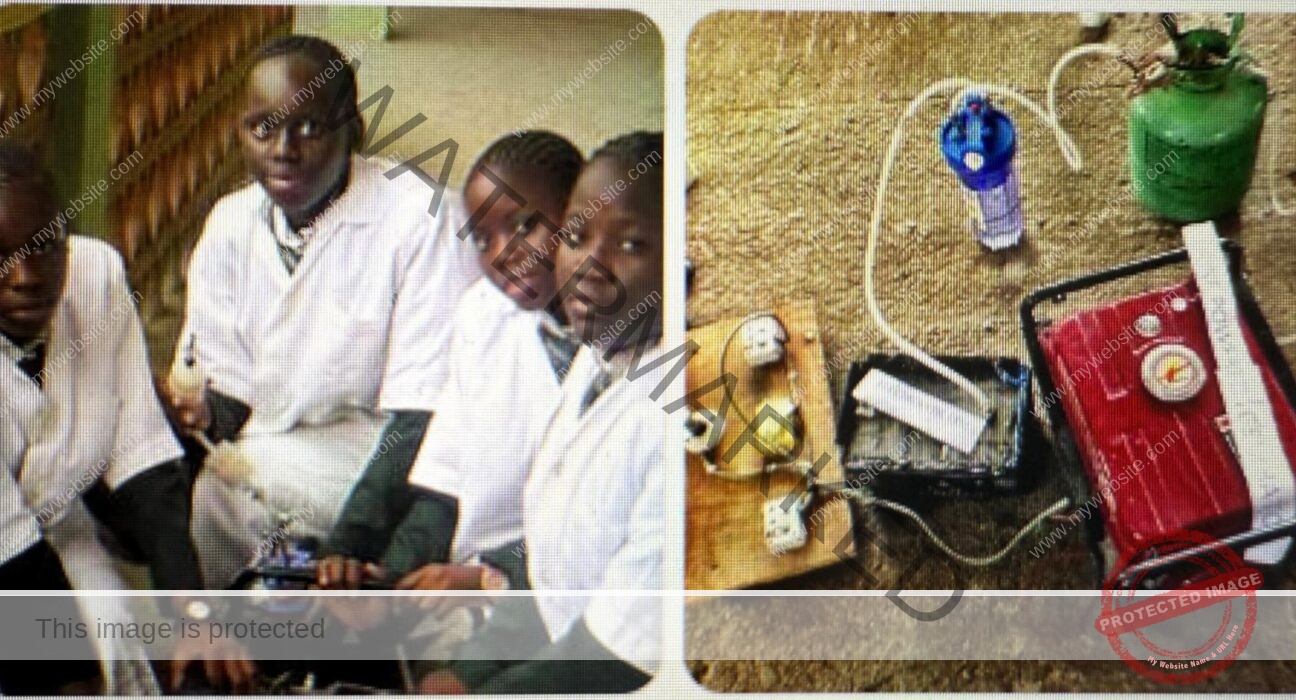Teenage girls, Duro-Aina Adebola, Akindele Abiola, Faleke Oluwatoyin, and Bello Eniola turn waste to wonder.
By Dr Martin Mungwa, PhD, F. ASCE
A group of four Nigerian schoolgirls have made headlines by turning an everyday waste product into something powerful: electricity.
At the Maker Faire Africa science event in Lagos, teenagers Duro-Aina Adebola, Akindele Abiola, Faleke Oluwatoyin, and Bello Eniola unveiled a generator that uses just one liter of urine to produce electricity for up to six hours. Their innovation could help solve energy shortages in poor and remote communities across Africa—and potentially around the world.
The invention uses urine to produce hydrogen gas. First, the urine is broken down in a small machine using electricity. The gas is then cleaned and fed into a generator that produces electricity. The only by-products are nitrogen and water vapor—making it a clean and efficient process.
For families who live without regular power or rely on dangerous kerosene lamps, this could be life-changing. Children can study after dark, phones can be charged, and small fridges or medical coolers can run safely.
But one question remains: how can this invention be scaled to serve entire villages or schools?
Making It Work Everywhere
Urine may be free and renewable, but for a generator to run regularly—especially in a shared space—there needs to be a reliable supply. One household may not produce enough on its own. That’s why experts suggest a few simple but powerful solutions:
Community collection tanks can be set up at public toilets, markets, or schools to gather urine from dozens or even hundreds of people. It would be enough to power shared systems like streetlights or computer labs.
Farmers could collect cow or goat urine in rural areas where livestock is common. It’s a practical and natural extension of farm life that adds value to animal waste.
Synthetic urea, a widely available fertilizer, can be mixed with water to mimic urine in the hydrogen-making process. While not ideal for waste-reduction, it can help when natural supplies run low.
Urine can be stored safely in containers, allowing households and communities to collect and use it when power is most needed—like at night or during school hours.
There are even early experiments using compost liquids or wastewater that might one day offer other low-cost sources of energy-rich compounds like urea or ammonia.
Can It Be Improved?
Yes—and quickly. Engineers are already thinking of ways to make the invention safer, cheaper, and more efficient.
Suggestions include using stronger containers for hydrogen gas storage to improve safety, powering the system with small solar panels so it’s fully off-grid, and teaching local technicians to build and repair the systems using affordable parts.
Multiple units can also be linked together into small-scale microgrids that power schools, hospitals, or entire neighborhoods.
The girls’ invention has inspired a wave of new interest in waste-to-energy solutions. Though it’s still a prototype, the science is sound—and the possibilities are exciting.
This shows that innovation doesn’t need to wait for the West or for big labs. These girls saw a problem and used their minds to solve it.
Why This Matters for Ambazonia
For Ambazonia—where many rural and war-affected communities have no access to reliable electricity—this invention is more than inspiring; it is potentially transformative. Entire villages in the Savannah, Midland, and Atlantic Zones operate off-grid, and many children study under candles or in darkness.
A low-cost, low-maintenance energy source that uses what every human produces daily could be a game changer. In internally displaced persons (IDP) camps, roadside settlements, and mission-run clinics, a urine-powered generator could power LED lighting, water pumps, vaccine storage, and communication tools—without relying on fuel, centralized grids, or foreign imports.
Moreover, local engineers, students, and grassroots innovators in Ambazonia can adapt and replicate the technology using community labor and recycled materials. With proper support, this could serve as a cornerstone for building resilient, self-reliant infrastructure in a region still recovering from conflict and neglect.
From Waste to Wonder
In places where power is unreliable, expensive, or completely missing, a urine-powered generator may seem like science fiction. But thanks to four curious and determined girls, it may soon be science fact—and a bright light for communities
Dr Martin Mungwa, PhD, F. ASCE

